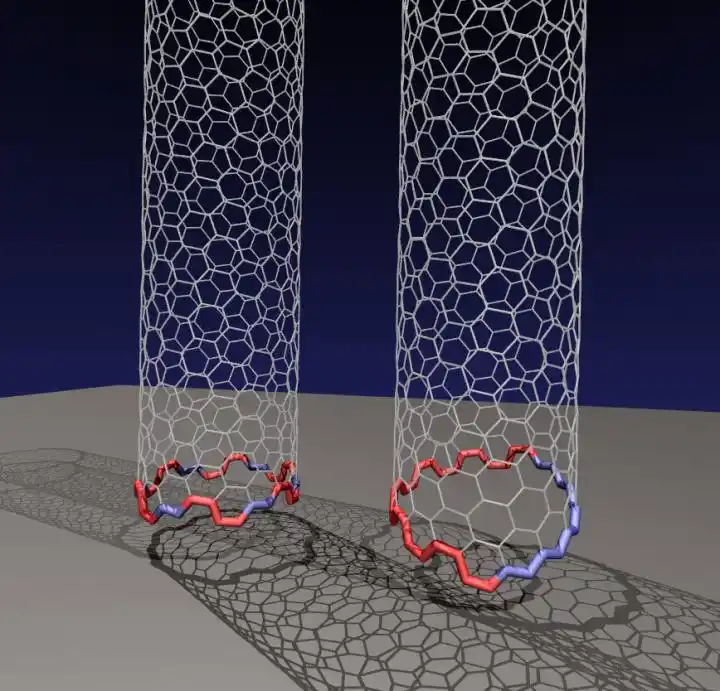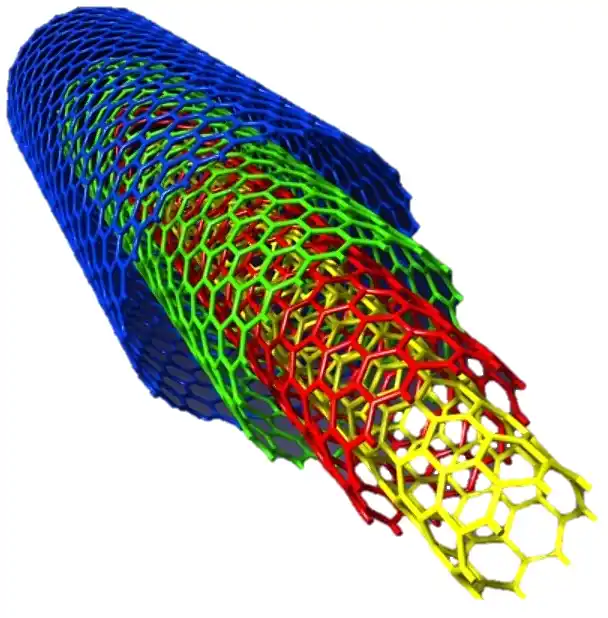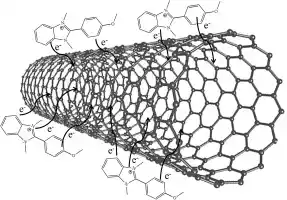افشین رشید
اُستادیار ؛ عضو هیات علمی دانشگاه آزاد اسلامی واحد علوم و تحقیقات تهران
615 یادداشت منتشر شدهBallistic electron transfer without friction from the surface of CNT carbon nanotubes and CNTs

Note: Since carbon nanotubes are able to pass the electric current through the ballistic transfer of electrons without friction - this current is a hundred times higher than the current that passes through the copper wire - so nanotubes are an ideal choice for many They are one of the applications of microelectronics.
According to their geometric shape, nanotubes become conductive or semi-conductive, depending on how the graphite plates that make them are rolled. In other words, because the nanotubes look like an interwoven wire at the molecular level. The carbon atoms are connected to each other in a hexagonal pattern, and these hexagonal patterns form cylindrical walls, the size of which is only How many nanometers is it? The twist angle of a type of nanotube, which is defined as the angle between the axis of its hexagonal pattern and the axis of the tube, determines whether it is conductive or non-conductive. that changing the radius also provides the possibility to close the length of the band and to insulate the metal nanotube.

So it can be said that the two basic parameters that play an important role in this, one is the structure of the nanotube and the other is its diameter and size. From a conductor to a semiconductor or an insulator, the electrical level of the nanotubes can be changed depending on whether the molecule Ballistic transfer of electrons without friction from the surface of carbon nanotubes is suitable on the nanotube surface .

Conclusion :
The frictionless ballistic transfer of electrons from the surface of carbon nanotubes is proportional to the third root of the mass of atoms and molecules by increasing the amount of thermal power and resistance of nanotubes. Also, heating increases the strength of nanotubes and increases its tensile strength by six times, and the conduction of ballistic transfer of electrons without friction from the surface of carbon nanotubes also increases.